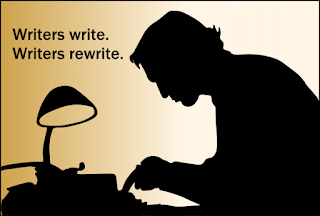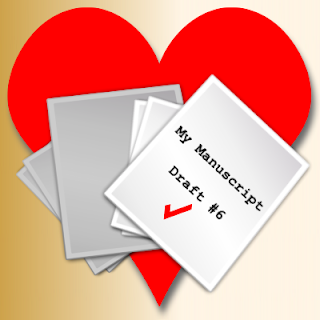 |
View larger image: Right click;
then left click "Open link in new
window." Zoom to 200% or
preferred size.
|
In On Writing Well, William Zinsser characterizes unity as "the anchor of good writing." In other words, any written work that is properly doing its job has a sustained, underlying order that the reader can follow and find satisfying, aesthetically as well as logically. Zinsser next refers to the several "unities" from which an author might choose. By this he means that, depending on the type, length and complexity of a work, there may be more than one way to achieve the desired overall unity. The goal is to make well-considered choices and stick to them. The longer and more complex the work, the more potential choices there are likely to be.
Unity at its simplest: the paragraph
With the exception of poetry and extremely short or experimental prose forms, the paragraph is the building block of written works from essays to full-length books. In the theory and practice of writing, unity therefore begins with the paragraph.
Those who attempted to pay attention during high school writing lessons may recall the phrase unity and coherence. Unity in this context simply means one topic per paragraph. When you change the subject entirely or make a significant turn of thought on the main topic, signal the shift by starting a new paragraph. Coherence refers to the arrangement of sentences within a paragraph into an order that is logical and readily comprehensible to the reader.
For the purposes of this chapter, there is little more you need to know about paragraph writing. I would only add the reminder to keep each paragraph you write to a reasonable, readable length—say, ten or fewer sentences. For those who wish to delve further into the mechanics of paragraph writing, a number of websites and blogs treat the subject. See, for example, http://writeenglish.net/paragraphunity1-1.php and https://wts.indiana.edu/writing-guides/paragraphs-and-topic-sentences.html.
Paragraphs and unity in longer works
Any essay, article, report, or book is essentially a series of clearly focused paragraphs, grouped into sections, scenes, or chapters, and ordered in a way to create and sustain unity in the work as a whole. All books have some unifying factors in common, with certain variations and additions that depend on the type of book, its complexity, and the creative inclinations of the author.
Unity in nonfiction books
Creating unity in any kind of nonfiction book involves making certain fundamental choices. For example, will the material be presented in the first person from the perspective of a participant, or as a third-person observer or expert? What will be the dominant tense of the book—present for immediacy or past tense to describe something being recollected from a previous time? What will be the overall tone, or mood, of the book? Casual or formal? Emotional or detached? Serious or lighthearted? The choice belongs to the author, but what should be avoided is a dramatic shift from one tone to another completely different one. Among the various genres, travel writing is notable for classic examples of the faux pas of tone. If, say, you are writing a heartfelt first-person account of your romantic vacation in Paris, do not lapse into the elevated tone of what I call "travelogue-ese": Paris boasts a plethora of fine art galleries for aficionados of the exceptional aesthetic experience. Finally, it is important to understand that you likely cannot write everything about any given topic. Focusing on a manageable aspect of a larger topic is the key to achieving unity in virtually any nonfiction book.
For further discussion of the basic factors of unity in nonfiction writing, see William Zinsser, On Writing Well, chapter 8, "Unity."
Above all, thoughtful and effective organizing of a nonfiction book's content is crucial to establishing and maintaining its unity. In a straightforward expository work, such as a how-to book, unity is often achieved by simply describing a step-by-step process in the order the steps would be undertaken. Examples in this category might include the following topics: how to renovate your bathroom in two weekends, how to build simple furniture, ten steps to business success, eight rules for effective resume writing, and so on. More complicated expository nonfiction might further entail such unifying tasks as amassing and organizing points and evidence in order to provide a clear explanation of a complex subject, mount a convincing argument, or support a methodology, hypothesis, or philosophical position. Works of popular or scholarly history, science, psychology, cultural criticism, and philosophy are examples of nonfiction that typically demands sophisticated approaches to creating unity.
Achieving unity in creative, or narrative, nonfiction also requires attention to ordering but often with some added challenges and choices to be met and made. For example, will the organization be chronological or thematic or a combination of both? Will the work incorporate the literary devices of novel writing (such as those indicated in the following section). And if the decision is to take a literary approach, which devices will be used, and to what extent?
Unity in novels
A solid plot, without holes or lapses in forward momentum, is the mainstay of a novel. Most crucial to any plot and its unity is handling of point of view. A novel may have a single point of view throughout—for example, one first-person narrator or one third-person character point of view. A novel may also need several points of view in order for the plot to function. There are various possibilities: among them, multiple third-person character points of view, more than one first-person narrator, or a combination of first- and third-person narration. It is important to decide on how to handle point of view before starting to write, as you want to avoid the disunity of too few, or too many, points of view. Is one point of view sufficient to tell the whole story? Or do you need two or more? If four are required, then don't introduce additional points of view to clutter the story. When necessarily working with multiple viewpoints in a novel, as you write, be disciplined and vigilant about maintaining one point of view per scene. Do not jump in and out of different characters' heads during a single scene. This is not only disruptive to the unity of point of view, but it will also disengage the reader from both story and characters.
In many instances, an airtight plot and considered, consistent handling of point of view are sufficient to produce a unified, engaging novel. But depending on the demands of their stories and personal inclinations as writers, some authors will introduce additional unifying elements into their fiction. These elements might include a main theme or important subtheme explored in various ways (for instance, different characters variously experiencing loss or abandonment). A theme or subtheme may be developed and unified through the use of recurring motifs and/or extended metaphors. For discussion, definitions, and examples of themes, motifs, metaphors, and related literary devices, go to https://writingexplained.org/grammar-dictionary/motif, https://literarydevices.net/motif/, https://literarydevices.net/extended-metaphor/, and https://www.litcharts.com/literary-devices-and-terms/extended-metaphor.
Unity in short
I've often said to anyone who will listen (or pretend to listen) that the basis of good writing is good thinking. Unity in book writing accordingly comes down to logic of ordering and consistency in handling the individual elements of unity—whether the goal is to explain a process, formulate a cogent argument, recount a true story, or plot a novel. In all cases, as Zinsser advises, "get your unities straight."













